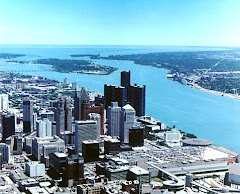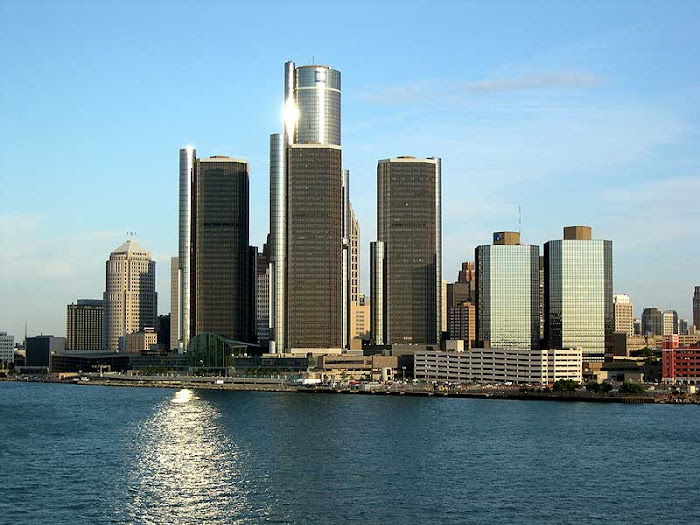




Throughout the 1970s he became proficient in the use of synthesizers and electronic keyboards, and he released a series of innovative, commercially successful albums featuring a fusion of progressive rock and soul, biting social commentary, and sentimental ballads. He signed a contract with Motown (1976) for $13 million, the largest negotiated in recording history at that date.
In the 1980s and 1990s he was increasingly engaged in children's and civil-rights causes, and he led the campaign to make Martin Luther King's birthday a national holiday. He was inducted into the Rock 'n' Roll Hall of Fame in 1989. A Time to Love, Wonder's first new album in ten years, was released in 2005 and featured the hit single "So What the Fuss" with Prince and En Vogue.
 Detroit has the second largest theater district in the country with over 13,000 seats in just a two block radius. So if you like theater, plays, dramas, opera and the works than you might want to come to the city of Detroit and spend your next vacation here. If the theaters don't thrill you than there are 123 bars and restaurants within the one square mile of downtown Detroit. So don't believe the hype I'm giving but come to Detroit and see it yourself. Now if you are already from Detroit than go downtown and see all of this for yourself as you become marveled my the great downtown that our city has.
Detroit has the second largest theater district in the country with over 13,000 seats in just a two block radius. So if you like theater, plays, dramas, opera and the works than you might want to come to the city of Detroit and spend your next vacation here. If the theaters don't thrill you than there are 123 bars and restaurants within the one square mile of downtown Detroit. So don't believe the hype I'm giving but come to Detroit and see it yourself. Now if you are already from Detroit than go downtown and see all of this for yourself as you become marveled my the great downtown that our city has.


The Steve Smith Scholarship Fund is supported by additional money raised from Steve’s three annual charity golf outings. Together with the MSU Alumni Club of Mid-Michigan, the MSU Alumni Club of West Michigan, and the MSU Detroit Area Development Council, approximately $500,000 has been raised to help support the Steve Smith Scholarship Fund, MSU, and local charities in the Detroit, Lansing, and Grand Rapids areas.
Steve's generosity has been recognized not only by the various charities, organizations, and institutions he donates to, but by the NBA as well. During 1997-1998 NBA season, Steve received the J. Walter Kennedy Citizenship Award, and was later awarded the Joe Dumars Sportsmanship Award in 2002. His goodwill and compassion for others placed Steve into an elite group of athletes when he was inducted into the World Sports Humanitarian Hall of Fame in 2006. The group's classic line-up was established in 1963, when Eldridge Bryant was replaced by David Ruffin (b. 18 January 1941, Meridian, Mississippi, USA). His gruff baritone provided the perfect counterpoint to Kendricks' wispy tenor and falsetto, a contrast that Smokey Robinson exploited to the full. Over the next two years, he fashioned a series of hits in both ballad and dance styles, carefully arranging complex vocal harmonies that hinted at the group's doo-wop heritage. 'The Way You Do The Things You Do' was the Temptations' first major hit, a stunningly simple rhythm number featuring a typically cunning series of lyrical images. 'My Girl' in 1965, the group's first US number 1, demonstrated Robinson's graceful command of the ballad idiom, and brought Ruffin's vocals to the fore for the first time. This track, featured in the movie 'My Girl', was reissued in 1992 and was once again a hit. 'It's Growing', 'Since I Lost My Baby', 'My Baby' and 'Get Ready' continued the run of success into 1966, establishing the Temptations as the leaders of the Motown sound. 'It's Growing' brought a fresh layer of subtlety into Robinson's lyric writing, while 'Get Ready' embodied all the excitement of the Motown rhythm factory, blending an irresistible melody with a stunning vocal arrangement.
The group's classic line-up was established in 1963, when Eldridge Bryant was replaced by David Ruffin (b. 18 January 1941, Meridian, Mississippi, USA). His gruff baritone provided the perfect counterpoint to Kendricks' wispy tenor and falsetto, a contrast that Smokey Robinson exploited to the full. Over the next two years, he fashioned a series of hits in both ballad and dance styles, carefully arranging complex vocal harmonies that hinted at the group's doo-wop heritage. 'The Way You Do The Things You Do' was the Temptations' first major hit, a stunningly simple rhythm number featuring a typically cunning series of lyrical images. 'My Girl' in 1965, the group's first US number 1, demonstrated Robinson's graceful command of the ballad idiom, and brought Ruffin's vocals to the fore for the first time. This track, featured in the movie 'My Girl', was reissued in 1992 and was once again a hit. 'It's Growing', 'Since I Lost My Baby', 'My Baby' and 'Get Ready' continued the run of success into 1966, establishing the Temptations as the leaders of the Motown sound. 'It's Growing' brought a fresh layer of subtlety into Robinson's lyric writing, while 'Get Ready' embodied all the excitement of the Motown rhythm factory, blending an irresistible melody with a stunning vocal arrangement.Norman Whitfield succeeded Robinson as the Temptations' producer in 1966 - a role he continued to occupy for almost a decade. He introduced a new rawness into their sound, spotlighting David Ruffin as an impassioned lead vocalist, and creating a series of R&B records that rivalled the output of Stax and Atlantic for toughness and power. 'Ain't Too Proud To Beg' introduced the Whitfield approach, and while the Top 3 hit 'Beauty Is Only Skin Deep' represented a throwback to the Robinson era, 'I'm Losing You' and 'You're My Everything' confirmed the new direction. The peak of Whitfield's initial phase with the group was 'I Wish It Would Rain', a dramatic ballad that the producer heightened with delicate use of sound effects. The record was another major hit, and gave the Temptations their sixth R&B number 1 in three years. It also marked the end of an era, as David Ruffin first requested individual credit before the group's name, and when this was refused, elected to leave for a solo career. He was replaced by ex- Contour Dennis Edwards, whose strident vocals fit perfectly into the Temptations' harmonic blend. Whitfield chose this moment to inaugurate a new production style.


 After finally arriving in Toledo, Ohio on October 14th, 2004, a complete re-fit of the boat began to make it ready to operate as a restaurant. A full kitchen with eight convection ovens, ten steam cabinets, and ten movable heater cabinets, two walk-in coolers, a fully functional dish room, and serving kitchens on each level are only a sample of the many changes which were made to the vessel.
After finally arriving in Toledo, Ohio on October 14th, 2004, a complete re-fit of the boat began to make it ready to operate as a restaurant. A full kitchen with eight convection ovens, ten steam cabinets, and ten movable heater cabinets, two walk-in coolers, a fully functional dish room, and serving kitchens on each level are only a sample of the many changes which were made to the vessel.Detroit is the city that we hope for better things as it arises from the ashes. That's why we must promote the great things about Detroit from its history to its culture to its famous as well as prominent leaders and figures.



